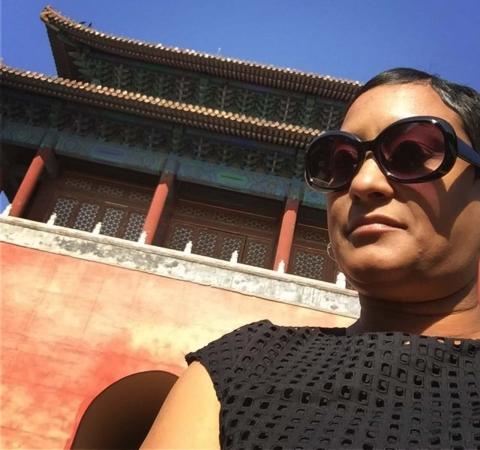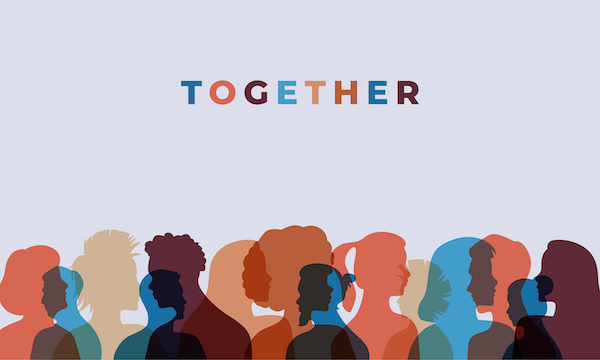“Achieving diversity and inclusion in leadership is an ongoing process that requires commitment at all levels of the organization,” says Melissa Cherry, chief diversity and inclusion officer/SVP for Miles Partnership. “It’s not just about hiring diverse leaders but also creating an inclusive culture where everyone feels valued and has equal opportunities for growth and advancement.”
On Feb. 13, Cherry will moderate an MPI Academy webinar called “Building an Inclusive and Equitable Meetings Industry.” In advance of this webinar, we caught up with Cherry to discuss measuring inclusivity progress, the impact of leadership on DEI initiatives and creating a sense of belonging at events.
Check back next month for part two of this conversation and register for the webinar today!

Five years from now: We’ve made significant progress toward a more inclusive meeting industry. What does that look like?
Overall, a more inclusive meeting industry in the future would prioritize diversity, accessibility and equality, creating a welcoming and enriching experience for all participants. Here are a few examples.
Diverse representation. Events and meetings would feature a more diverse range of speakers, panelists and participants. Event organizers would actively seek out and promote diverse voices to ensure a well-rounded perspective.
Accessible venues. Meeting spaces would be designed and equipped to be accessible to all individuals, regardless of their physical abilities. Virtual attendance options would also be seamlessly integrated, ensuring inclusivity for those who cannot attend in person.
Equitable opportunities. Opportunities for career advancement within the meeting industry would be distributed more equitably. This includes leadership positions, speaking engagements and networking opportunities. Efforts would be made to break down barriers that might hinder certain groups from progressing in their careers.
Inclusive technology. Technological solutions used in meetings would be designed with inclusivity in mind. This means considering accessibility features, language options and making sure that virtual platforms are user-friendly for people of all backgrounds and abilities.
Cultural sensitivity. Events would be organized with a deep understanding and respect for various cultures. This involves considering cultural differences in scheduling, food options and overall event design.
Community engagement. The meeting industry would actively engage with local communities and incorporate their perspectives. This could involve collaborating with community organizations, supporting local businesses and addressing the specific needs and concerns of the areas where events are held.

Can you tell us about a tangible way a company or organization can measure inclusivity progress?
By regularly collecting and analyzing data related to the below metrics, organizations can gain insights into their progress toward creating a more inclusive environment. It’s essential to set specific, measurable, achievable, relevant and time-bound (SMART) goals and regularly reassess strategies to address any gaps in inclusivity.
Workforce diversity metrics:
- Representation: Track the diversity of your workforce by collecting data on employees' ethnicity, gender, age, abilities and other relevant factors.
- Leadership positions: Monitor the representation of diverse groups in leadership and decision-making roles.
- Hiring practices: Analyze recruitment and hiring processes to ensure they are attracting a diverse pool of candidates.
Inclusive culture metrics:
- Employee surveys: Conduct regular surveys to gather feedback on the organization’s culture. Include questions related to inclusivity, belonging and whether employees feel their voices are heard.
- Retention rates: Assess the retention rates of employees from different demographic groups to identify any disparities.
Equitable opportunities metrics:
- Promotion rates: Examine the rates at which employees from diverse backgrounds are promoted to higher positions.
- Training and development: Measure participation in training and development programs across different demographic groups to ensure equitable access.
Supplier diversity metrics:
- Supplier relationships: Evaluate the diversity of the organization’s suppliers and contractors. Encourage partnerships with businesses owned by underrepresented groups.
Community engagement metrics:
- Community partnerships: Measure the organization’s involvement in community initiatives and partnerships that promote inclusivity.
- Impact assessments: Evaluate the positive impact of the organization's activities on the communities it serves.
“Creating events that make people from diverse cultures feel a sense of belonging involves thoughtful planning, cultural sensitivity and inclusive practices.”
Many organizations have set objectives for more diverse/inclusion leadership teams. Any advice on how to make that happen?
Achieving diversity and inclusion in leadership is an ongoing process that requires commitment at all levels of the organization. It’s not just about hiring diverse leaders but also creating an inclusive culture where everyone feels valued and has equal opportunities for growth and advancement.
Ensure that top leadership is committed to diversity and inclusion. When leaders prioritize these values, it sets the tone for the entire organization.
Establish specific and measurable diversity and inclusion goals for leadership positions. Set targets for representation and track progress over time.
Provide training for leaders on unconscious bias, diversity and inclusion. Make them aware of potential biases in decision-making processes to promote fair and equitable practices.
Actively work on building diverse talent pipelines for leadership roles. This may involve targeted recruitment efforts, partnerships with diverse professional organizations and networking events.
Implement mentorship and sponsorship programs to support the development and advancement of diverse talent. Mentors and sponsors can play a crucial role in helping individuals navigate their career paths.
Incorporate diversity and inclusion into succession planning. Identify and develop high-potential individuals from diverse backgrounds for leadership roles.
Communicate openly about the organization’s commitment to diversity and inclusion. Share progress, challenges and successes with employees to build trust and transparency.
Hold leaders accountable for progress toward diversity and inclusion goals. Recognize and reward leaders who actively contribute to creating an inclusive culture.
Regularly assess the effectiveness of diversity and inclusion initiatives. Solicit feedback from employees and be willing to adapt strategies based on the evolving needs of the organization.

People from just about every culture touch the meeting industry. How can we ensure our events make them all feel a sense of belonging?
Creating events that make people from diverse cultures feel a sense of belonging involves thoughtful planning, cultural sensitivity and inclusive practices. Here are some strategies to ensure events are welcoming and inclusive for individuals from various cultures.
Cultural competence training: Provide cultural competence training for event organizers, staff and volunteers. This training can help them understand and appreciate cultural differences, avoid stereotypes and navigate cross-cultural interactions effectively.
Diverse representation: Ensure diverse representation among speakers, panelists and performers. Aim for a variety of cultural perspectives and backgrounds to reflect the diversity of your audience.
Cultural sensitivity in design: Consider cultural nuances when designing event materials, visuals and themes. Avoid using symbols or imagery that may be offensive or misunderstood in certain cultures.
Flexible scheduling: Be mindful of religious and cultural observances when scheduling events. Avoid conflicting with significant holidays or events that may impact attendance.
Inclusive catering: Offer a diverse range of food options that cater to various dietary preferences and cultural tastes. Clearly label dishes to indicate ingredients and accommodate dietary restrictions.
Community engagement: Engage with local communities to understand their preferences and needs. Collaborate with community organizations and leaders to ensure your events align with the cultural norms of the region.
Inclusive policies: Implement and communicate inclusive policies that explicitly state the organization’s commitment to diversity and respect for all attendees, regardless of their cultural background.



